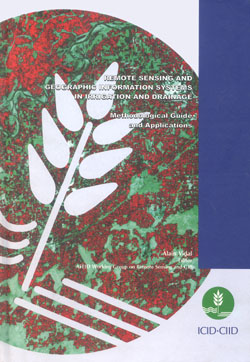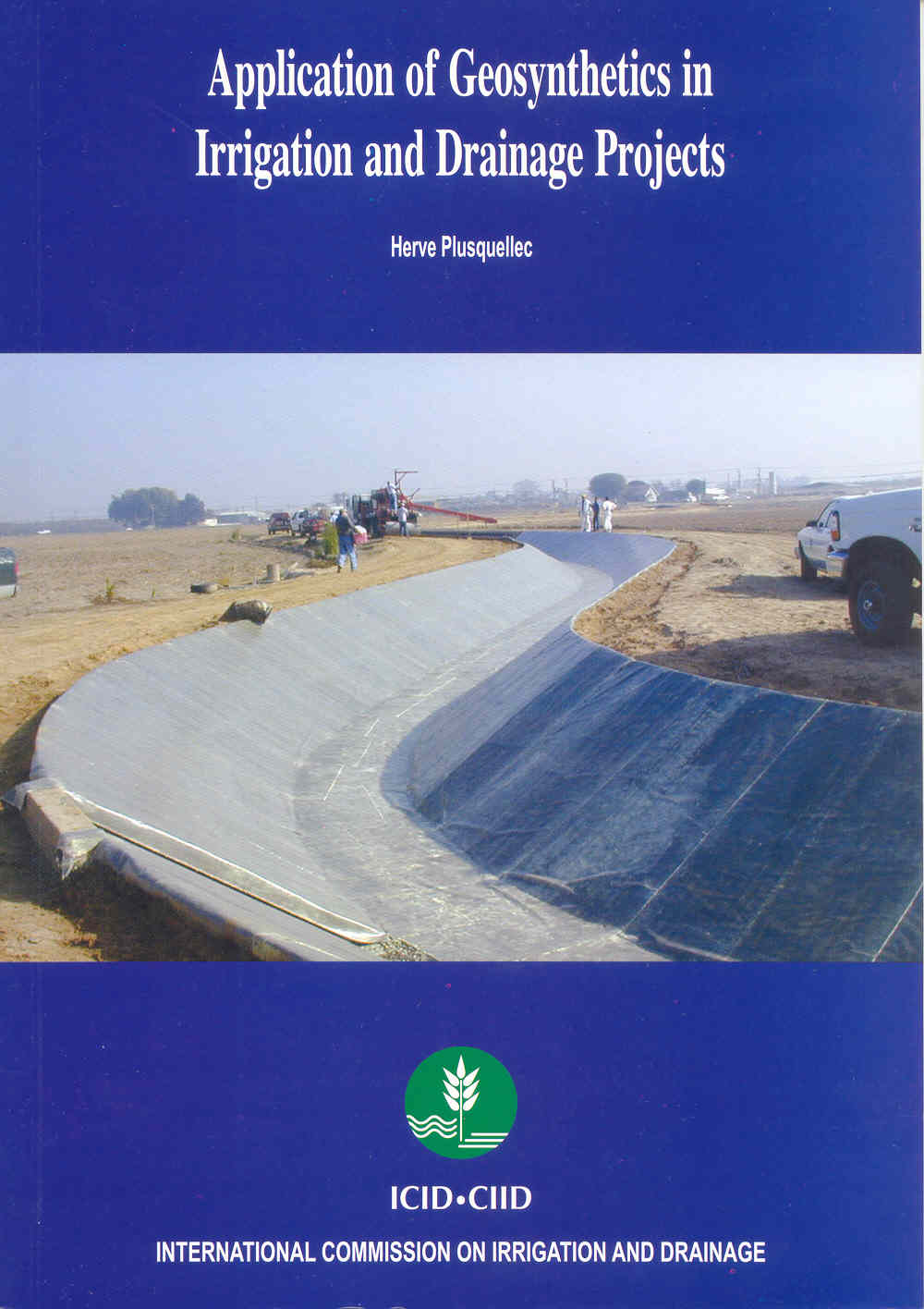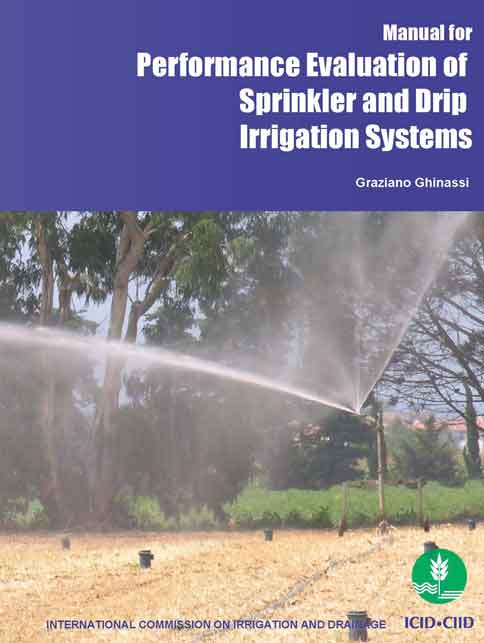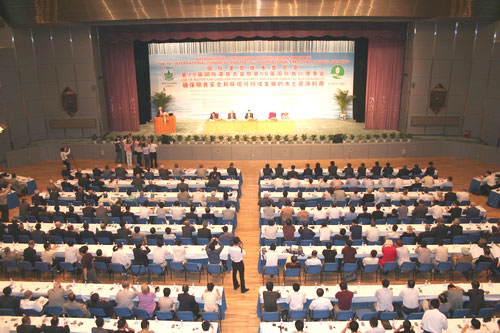
Field drainage systems are differentiated insurfaceandsubsurfacefield drainage systems.Sometimes temporary drainage is required whereby the drainage system is allowed to function on certain occasions only such as, during the harvest period. If allowed to function continuously, excessive quantities of water would be lost. Such a system is therefore called achecked, or controlled, drainage system. More usually, however, the drainage system is meant to function as regularly as possible to prevent undue waterlogging at any time and one employs aregular drainage system. This is sometimes also called a "relief drainage system".
Sometimes, a subsurface drainage system is installed in soils with a low infiltration capacity, where a surface drainage problem may improve the soil structure and the infiltration capacity so greatly that a surface drainage system is no longer required.
On the other hand, it can also happen that a surface drainage system diminishes the recharge of the groundwater to such an extent that the subsurface drainage problem is considerably reduced or even eliminated.
Usually, pipe drains or ditches are preferable to wells. However, when the soil consists of a poorly permeable top layer several metres thick, overlying a rapidly permeable and deep subsoil, wells may be a better option, because the drain spacing required for pipes or ditches would be considerably smaller than the spacing for wells.
When the land needs a subsurface drainage system, but saline groundwater is present at great depth, it is better to employ a shallow, closely spaced system of pipes or ditches instead of a deep, widely spaced system. The reason is that the deeper systems produce a more salty effluent than the shallow systems. Environmental criteria may then prohibit the use of the deeper systems.
Related items you may like






























































































Irrigation
Sources of Irrigation
Irrigation History +
Sources of Irrigation +
IMPROVING SOIL MOISTURE +
Ponds +
Tanks +
Diversion Weirs +
Dams and Reservoirs +
Groundwater +
Conjunctive Water Use +
Wastewater +
Poor Quality Water +
Application of Irrigation water
Canal Irrigation +
Flood Irrigation +
Deficit Irrigation +
Supplemental Irrigation +
Sprinkler Irrigation +
Drip Irrigation +
Lift Irrigation +
Centre Pivot Irrigation +
Tidal Irrigation +
Micro-Irrigation Technologies for Small Holders +
Automatic Irrigation Systems +
Pressurized Irrigation +
Irrigation in Viticulture +
Purpose of Irrigation
Instruments and implements of Irrigation
Pumps +
Centrifugal Pumps +
Submersible Pumps +
Turbine and Jet Pumps +
Conveying Pipes +
Sprinklers +
Drippers +
Canal Automation Systems +
Irrigation Management
Economics of Irrigation System +
I&D System Types +
I&D Investment Functions +
I&D Management Issues +
Participatory I&D Management +
Equity in Irrigation +
Irrigation Services +
Irrigation and environment
Pollution and Irrigation +
Irrigation and Climate Resilience +
Environmental Aspects of Irrigation +
Environmental Impacts of Irrigation +
Green Lawn Irrigation +
Safe Use of Waste Water in Irrigation +
Organic Agriculture +
Soil Health +
Soil Health Management +
Quality of Irrigation Water +
Capacity Development
Drainage
Drainage Types and Systems
Agricultural Drainage +
Field Drainage systems +
Canal Irrigation and Drainage +
Surface Drainage Systems +
Subsurface Drainage +
Mole Drainage +
Bio-Drainage +
Regional Bio-Drainage +
Drainage Issues
- Snowfield
- Drainage area, Drainage basin, River basin, Catchment area, Catchment basin, Catchment, Watershed
- Water parting, Drainage divide, Divide, Watershed divide, Watershed boundary, Topographic divide
- Yield of drainage basin, Annual yield of drainage basin
- Drainage modulus, or Drainage coefficient
- Field coefficient of permeability
- Field capacity, Normal field capacity, Normal moisture capacity, Maximum field carrying capacity, Field capillary (moisture) capacity, Effective water-holding capacity, Specific retention
- Effective velocity (of groundwater), Actual velocity (of groundwater), True velocity (of groundwater), or Field velocity (of groundwater)
- External drainage
- Field moisture
- Field capacity
- Internal drainage
- Bio-drainage
- Drainage head
- Endogenic drainage
- Allogenic drainage
- Endoreic drainage
- Areic drainage
- Exoreic drainage
- Drainage gallery
- Drainage wells
- Horizontal drainage blanket, Pervious blanket, or Drainage filter
- Soil classification systems
- Field command
- Cross-drainage work, or Drainage crossing
- Level crossing, or Level drainage device
- Syphon aqueduct, Drainage syphon, Cross drainage culvert
- Drainage overpasses
- Venturi flume drainage crossing
- Drainage culvert, or Supply culvert
- Field delivery point
- Agriculture division box, or Proportional distributor on the field
- Integrated production systems
- Cross drainage
- Inverted drainage well, or Disposal well
- Well field
- Field head-capacity curve for pump
- Irrigation through buried drains, Irrigation-drainage, or Vallenhove process
- Field supply
- Field water balance
- Field application efficiency
- Drainage
- Drainage channel
- Artificial drainage
- Lowland drainage
- Agricultural land drainage
- Drainage system
- Closed-drainage area, Blind drainage area, or Non-contributing area
- Drainage benefit
- Degree of drainage
- Field drainage
- Field drainage system
- Land drainage
- Natural drainage system
- Seepage drainage
- Subsurface drainage system
- Open channel drainage
- Surface drainage
- Main drainage system
- Drainage fittings
- Drainage pump sump
- Drainage trench
- Drainage head
- Field drain, Farm drain, Field lateral or Field ditch
- Field inspection shaft
- Horizontal subsurface drainage system
- Natural drainage or Natural drainage capacity
- Improved drainage or Artificial drainage
- Open field drain
- Random drainage system
- Trenchless drainage
- Open-channel drainage
- Convergent drainage pattern
- Natural drainage systems, or Random drainage systems
- Cutoff drainage system, or Intercepting drainage system
- Herringbone drainage system
- Gridiron drainage system
- Double-main drainage system
- Composite drainage system
- Grouping drainage system
- Zigzag drainage system
- Field ditches
- Random field ditches
- Parallel field ditch system
- Cross-slope ditch system, or Drainage-type terraces
- Drainage-density
- Drainage pattern
- Superposed drainage, Super imposed drainage or Inherited drainage
- Subsurface drainage, Under drainage, Subsoil drainage, Underground drainage, or Covered drainage
- Relief drainage system
- Convergent drainage system
- Elkington drainage system, Sink-hole drainage
- Rerolle drainage system
- Across-the-slope drainage system, or Keythrope drainage system
- Sub-lateral, or Field drain
- Drain tile, Field drain pipe, Subsoil pipe, Land pipe
- Vertical drainage, or Inverted well
- Mole drainage
- Field surface drain
- Surface drainage system
- Drainage coefficient, Drainage modulus or Drainage design rate
- Drainage design rainfall
- Drainage efficiency
- Drainage season
- Field capacity, Field moisture capacity, Normal field capacity, Normal capacity, Capillary capacity, Maximum field carrying capacity, Field capillary (moisture) capacity, Effective water holding capacity
- Angular drainage pattern
- Arterial drainage
- Dendrite drainage
- Drainage boards (also called prefabricated drains)
- Slot drainage
- Radial drainage pattern
- Trellis drainage pattern
- Drainage density
- Vertical subsurface drainage system
- Drainage pumping station, Drainage pumping plant
- Semi-automatic field water distribution system, or Partially automatic system
- Field control panel
- Pneumatic butyl valve (for pipeline distribution systems)
- Field strip cropping
- Drainage terrace, Drainage control terrace, Interception and diversion terrace, Runoff control terrace, or Channel terrace
- Biological systems
- Leaching field
- Land drainage
- Design drainage rate
- Soil drainage status
- Excessive drainage
- Imperfect drainage
- Underdrainage
- Singular layout drainage design
- Natural drainage layout
- Composite layout drainage system
- Mole drainage
- Free drainage
- Poor drainage
- Drainage basin
- Hydraulic effectiveness of flood control systems
- Field
- Systems analysis, Operational analysis, System engineering, Mathematical modeling, Management science
- Systems compatibility
- Systems engineering
- Systems integration
- Decision Support Systems
- Ground survey, or Field survey











